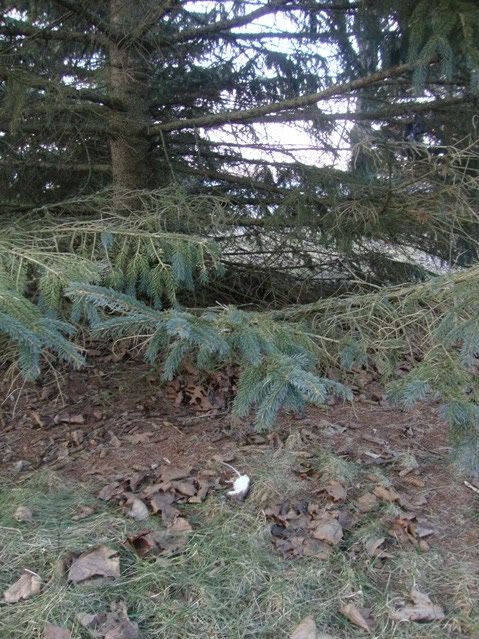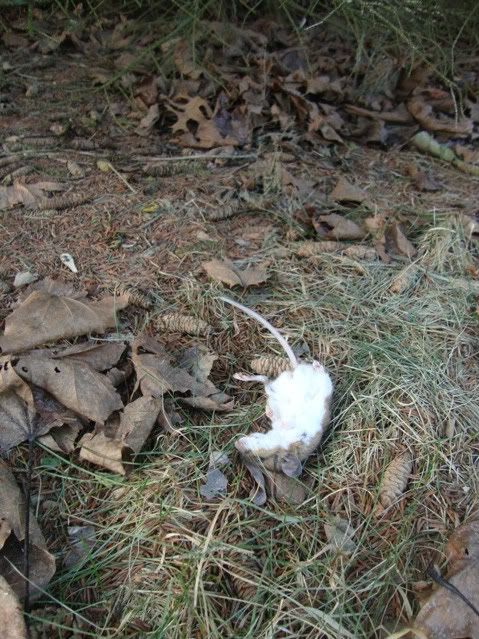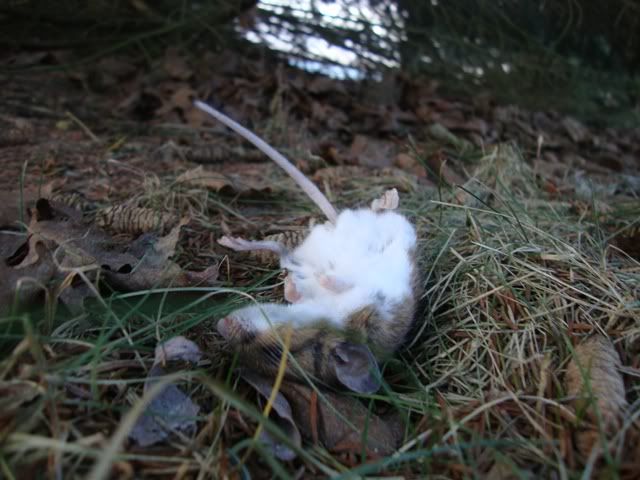I am frequently stumped by things I observe when out in the field.
This morning (February 17th) was no exception.
I was walking along the edge of some trees behind the house with the dog when a something caught my eye: a small rodent laying on its back in the grass. It was completely intact and almost appeared to be sleeping.
Now, I went to college....and as a result I was able to deduce that it was unlikely this rodent was actually asleep on its backs in this exposed location. So, using all of the limited power in my brain, I came to the conclusion that something must be up (hey....it was early in the morning and I hadn't quite gotten enough coffee, afterall).
So I was under the assumption that I had stumbled across an individual that had gone into one of these torpid states, and perhaps fell from a nest site in a nearby tree (they are semi-arboreal and known to often nest off of the ground; Nicholson 1941).
But my touch revealed the colder truth. The mouse was frozen solid, eyes staring blankly back at the grass upon which it lay.
My next thought was that perhaps a bird of prey had grabbed the little critter, killed it, and dropped it here on accident (or dropped it and it died due to the fall). I inspected the body for damage or wounds of any kind, and found none.
It's also possible that the mouse fell out of its nest in a semi-conscious state and never woke up enough to return to it's nest before freezing.
The possibilities are limitless, I suppose.
I suspect I'll never know.
Literature Cited:
Lackey, J.A., D.G. Huckaby, and B.G. Ormiston. 1985. Peromyscus leucopus. Mammalian Species No. 247. pp 1-10. Published by the American Society of Mammalogists.
Lynch, G.R., F.D. Vogt, and H.R. Smith. 1978. Seasonal study of spontaneous daily torpor in the white-footed mouse, Peromyscus leucopus. Physiological Zoology 51:289-299.
Nicholson, A.J. 1941. The homes and social habits of the wood mouse (Peromyscus leucopus noveboracensis) in southern Michigan. American Midland Naturalist 25:196-223.



When I worked at a wildlife rehabilitation center, there was much talk about how even the slightest nick from a house cat could kill rodents, birds etc. because of the bacteria introduced into their system....?
ReplyDeleteInteresting. I've often found shrews like this on the trail, sometimes several in one day, but never mice. My initial thought that it was dropped from a bird of prey, but I would think they could just drop down from their perch and grab it from the ground. That's one thing I love about nature. No matter what you know, there is always something new to try to figure out.
ReplyDeleteBill
I at first thought of the shrew, and how many times I've found them dead in the yard or in the middle of the trail...with no obvious wounds. But I've since learned that shrews have SUCH a high metabolism so they literally must eat constantly to keep up their energy and thus, heat-making, to survive.
DeleteAm I right to say that Peromyscus and Mus species do not have similar metabolic afflictions?
....not like shrews....
DeleteSome species of shrew have metabolic demands that require them to eat close to their own body weight daily when active! The short-tailed shrew (which is pretty common, Blarina brevicauda) experiences even higher metabolic demands and greater food consumption in winter...if active. However, they can apparently reduce their metabolic rates/energy demands from what I've read. Although they aren't obligate hibernators....they will enter frequent states of torpor (some short term, some more long term) to achieve this....
Thanks TB, and I was specifically thinking of brevicauda because that seems to be most common in my neck o' the woods!
DeleteNo prob!
DeleteB. brev. is a neat little critter. Aside from all the other stuff, it's also one of the few toxic mammals.......
http://blazin-trailblazer.blogspot.com/2011/06/weeks-end-survey-round-up-ii-of-turtle.html
I have actually been bitten by one, this past January during my Winter Eco course. Interesting sensation!
DeleteDunno about your mouse, but shrews that are caught by a land predator, such as a bobcat or fox, are often dropped on trails uneaten. The musk they give off fills the mammal's mouth with such a bad taste as they walk along after the kill, that they spit them out and leave them.
ReplyDelete